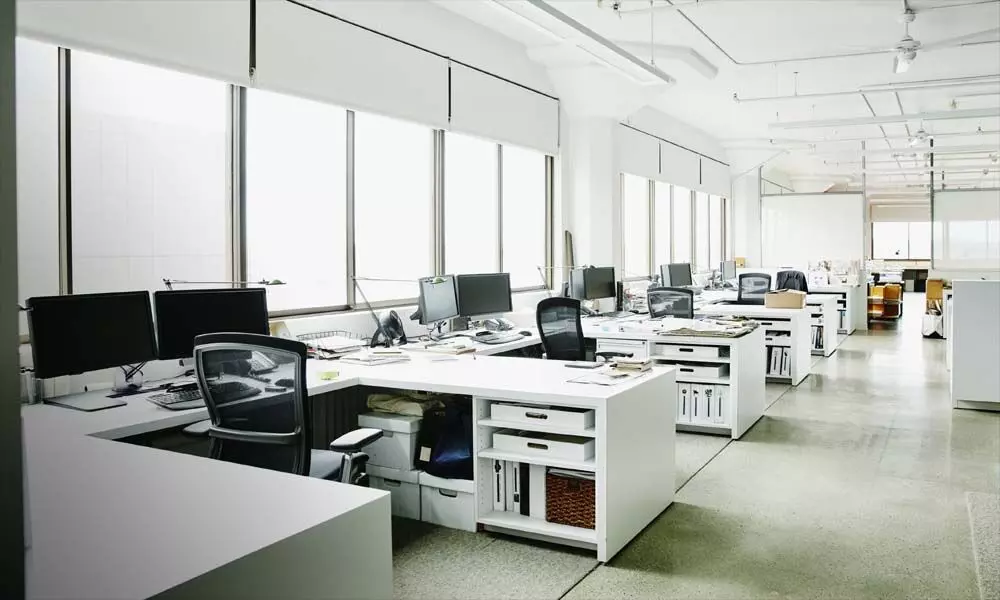Conscious planning and design: personalizing the workspace post COVID-19

Workspace post COVID-19
In recent times, the corporate world has dealt with some unprecedented and challenging circumstances.
In recent times, the corporate world has dealt with some unprecedented and challenging circumstances. Trends, practices and office designs were redirected to ensure continuity of operations under the shadow of the pandemic. We have endured the toughest part of the challenge and today the world is steadily regrouping and reorienting itself to navigate forward on the path to growth. However, there is an undeniable aspect to this revamped focus towards business growth and resiliency in 2021: things are not the same and unlikely to be exactly as they were in 2019. The year 2020 has been a disruption that has brought forward thoughts, ideas and concepts which are integral to the future of commercial activities even in a COVID-19 free world.
The workplace isn't just a physical space where work is done. It is also a tool to enable coming together—a place of community and culture-building, and a sort of safety net. The design of the physical environment has a significant effect on one's emotional state. When it encourages a positive mood, has been designed to minimize physical and psychological stressors, and prompts the right behaviors, there are a number of benefits. Occupants think more innovatively and creatively, collaborate more effectively, focus better, and much more. In the post-pandemic scenario, they will naturally look for a space that gives them the best of both the home and office environments. A recent report suggests that it is possible to design positivity into the office space and create a stress-free environment for the employees. This can be done through the right kind of colour and biophilic designs. Here are some things to consider.
Light and biophilia
Nature and human beings have an inherent bond. Biophilic elements such as greenery, living walls, natural patterns, extensive outdoor views, water bodies, natural greenery and landscaping can enhance employee concentration and productivity manifold. Additionally, spaces must be built in way that they foster physical activity. This will contribute to their well-being quotient – read dynamic workstations, balance boards, access to gym facilities and even utilizing staircases. Lighting is another element that not only has aesthetic value but is also important for the human circadian rhythm and the ability to work effectively. Lighting design should be done in a way that it taps daylight but keeps out the heat and glaze. In terms of artificial light, it should be customized as per what is needed to do various tasks.
Air and sound
An individual spends about 90% of their lives indoors. However, what is also true is that air pollutant levels are at least two to five times higher indoors which leads to conditions such as nasal congestion, sick building syndrome and sinus, etc. To enhance air quality index of indoor spaces, it is imperative to install high-efficiency filters and purification systems, and low VOC materials. Adequate ventilation, provision of exhaust fans in spaces and air purifiers can also improve air quality.
Research also shows that exposure to noise sources can hamper health and wellbeing differently in individuals. It can lead to sleep disturbances and even hypertension. To counter this, office design must include aspects such as efficient facade design, partition and ceiling systems, sound-masking systems and use of absorptive materials that enhance sound privacy and increase comfort.
In conclusion
When people come together to co-create and work together in the same space, it brings about a stronger company culture. This helps them align better with the organization's vision, and feel a part of the bigger picture. Building a community, co-creating and co- working to achieve goals makes employees more engaged and leads to better results and output. Achieving all of the above would require an environment that is safe and focuses on mental and physical well-being of the users.
One of the most impactful lessons we have learned from the chaos is that conscious planning and design should make personalization an essential part of all office spaces. As a part of this realization, it has also come to light that in majority of the organizations, conventional office designs, structures and processes are not in sync with the mental and physical wellness needs of our times. Thus, as workplace designers, we need to consciously innovate and focus on concepts which promote a sense of belonging and elicit positive psychological responses without compromising on the conventional needs for efficiency and space optimization.
(The following article is written on behalf of Titir Dey, Director- Design, Space Matrix)



















